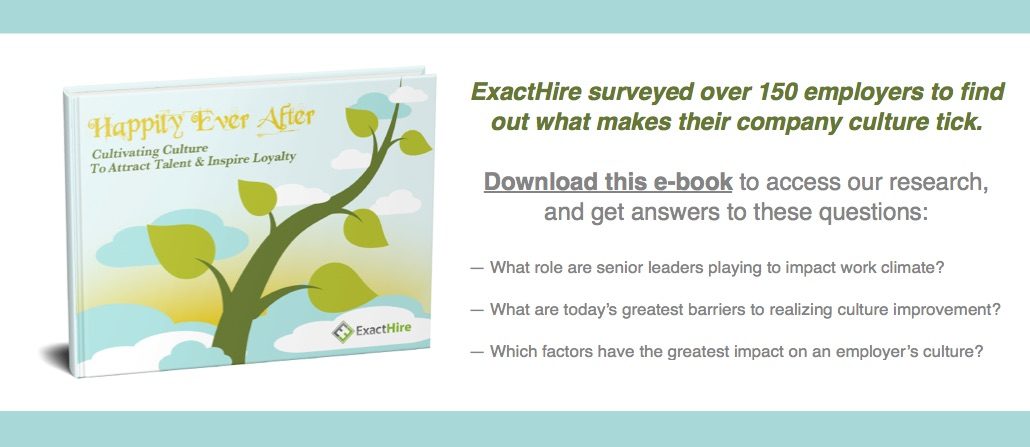Employee Culture And Corporate Job Fit – Buzzwords Or Reality?
Your employees are a valuable resource. They are the power behind your customer service, production, and revenue generation. They are also the ones who will have the most interaction with your customer base. Having a set of employees who act in a similar way to situations is the key to delivering a consistent experience for customers.
One way to ensure a consistent customer service experience is to have a recruitment process that takes into consideration how well candidates may be able to successfully assimilate into your company culture as a part of the selection cycle. Culture has long been the focus of management consultants and other HR professionals as a way for businesses to improve their productivity, decrease costs and improve employee retention.
However, does corporate culture have as great an impact within an organization as we might be led to believe? Or are employee culture and job fit just buzzwords?
What Is Company Culture?
Organizations are not faceless entities run by people in suits in a boardroom. They have personalities, identities and values that are present both internally and externally. Company culture can be described as the organization’s personality from the employee perspective. It is an experience that includes the company’s mission and the workplace atmosphere.
How this is symbolized within the organization varies from company to company. It might be documented officially, represented in a logo, or be an unspoken set of behaviors understood throughout the organization. A company’s culture will determine the environment of the workplace – for better or worse.
The corporate culture of a work environment also affects how the organization interacts with external entities: the local community, customers, and others. Essentially, when a brand has a strong corporate culture, everyone knows about it.
Take for instance Zappos. Its corporate culture is as well-known as its products, and cultural promotion starts from the moment its team hires a new employee. Zappos has a cultural fit interview and during training, if hiring managers feel the job isn’t for the recruit then the recruit is offered $2,000 to quit in the first week.
Also, ten core values are promoted to every team member. This is possible because a portion of the corporate budget is spent on culture promotion and employee team building. The Zappos team’s efforts have yielded great results, with happy employees and great customer experience.
Employees and Their Cultural Values
Employees have ethics and moral codes which help dictate their behaviors in certain scenarios. With enough information, you can accurately predict what actions an employee would take in different scenarios.
When these actions are aligned with the organization’s corporate culture; the employee feels secure and happy. Other research has found that happy workers are 12% more productive than unhappy workers.
When employees are not aligned to the corporate culture, this can be a significant issue as some sources report. One report by the Harvard Business School stated that the annual cost of a toxic employee, an employee who negatively affects the cultural cohesion of a team, is on average $12,000 per year. Other studies have placed this figure even higher.
Failing to hire employees that will complement your corporate culture may lead to a toxic environment, despite whether the new hire is highly productive or skilled at bringing in high levels of revenue. A hire that is out of sync with your corporate values and culture can cause staff and customers to abandon your business, and this can be costly.
Hire For Culture
The general consensus among business leaders is that cultural fit is vital for successful recruitment. A survey by Cubiks in 2013 found that 82% of managers thought it was important and 59% had indicated that they had rejected clients because they weren’t a good cultural fit. Additionally, 92% disagreed that cultural fit was a buzzword.
The argument seems to be in favor of the recruitment process incorporating exercises that assess whether the cultural values of the candidate will align with those of the employer.
It isn’t just business owners that think the cultural fit is important, many job seekers believe that finding a company with values similar to their own is important. In fact, corporate culture can be a top priority during the application process relative to market presence, financial performance, or longevity.
How Can You Define Your Corporate Culture?
If you want to hone your recruitment process and start to reduce the number of bad hires that are coming into your business, you need to define your culture clearly. There are three elements that you could use to help according to this blog by Moz:
Shared Beliefs: These are the aspects, concepts and behaviors that your organization believes are universally true. You can sum these up in a few statements including:
- Great employees have traits like X, Y, Z
- It is inappropriate to Y at work
- You should treat others right by doing Z
Shared Priorities: These are the activities, tasks and long/short-term goals that are most important to your organization. This element can also relate to shared processes that individuals have when it comes to making decisions.
Stylistic Cohesion: Not everyone has to agree, that would be useless for your business, as some conflict can help solve problems with innovative solutions. However, cohesion is about creating a team where none of the members adversely affect the happiness or performance of others.
How to Ensure a Good Fit
When it comes to recruitment, make sure you ask the right questions during the interview stage. Questions that attempt to reveal the candidates’ behavioral norms, values and priorities will help you predict cultural values and their future behaviors.
You’ll start to get a good idea about whether they are a good cultural fit as you should know what answers you and the rest of your team would give if asked. However, bear in mind that this is the opportunity for your candidates to query your corporate culture too. So be prepared to answer questions that could relate to that.
You could help demonstrate the corporate culture of your organization in the interview with the support of visual and audio aids. These could be part of the interview or situated in the waiting area.
Finally, offer a social event to examine the candidates’ cultural fit, such as a social meeting after the interview, a job shadow or consider a short trial period. Either of these will give you insights about the candidates in a different setting and reveal details about them that a stressful interview would not. If they get the chance to meet another employee or two, then your current staff could also help determine whether candidates are a good fit or not.
Conclusion
Candidate cultural fit is not a buzzword; it’s a vital aspect of your potential hires that can determine their success and support of your organization. Get it wrong, and you could face extensive costs in replacing the staff member and repairing the damage they cause your business. Get it right, and you could have a loyal staff member who supports the growth and advancement of your organization.
Do you hire with the cultural values of the employee in mind? How do you identify your candidates’ cultural values?










